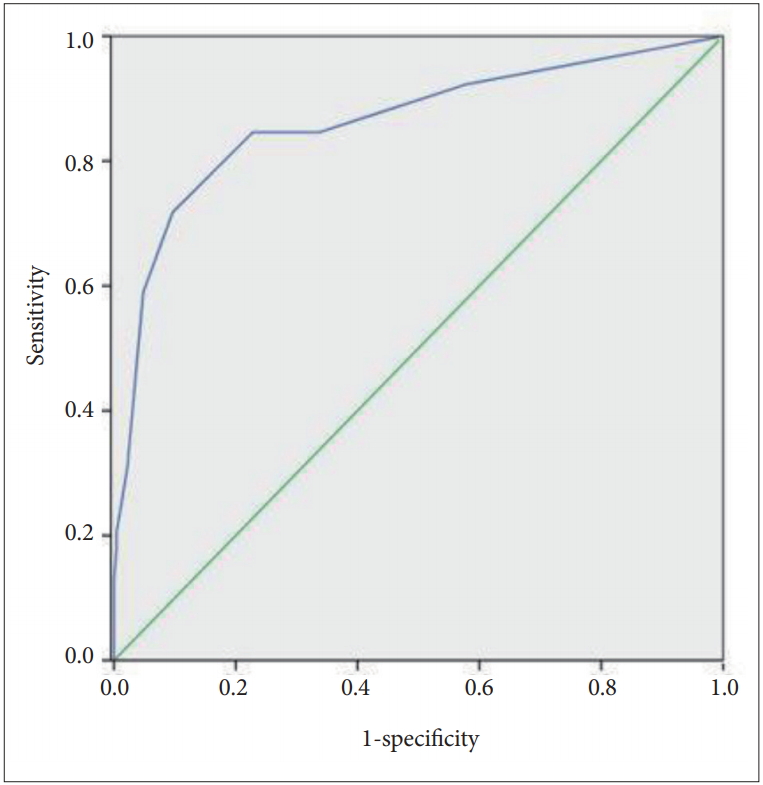 |
 |
- Search
| Psychiatry Investig > Volume 17(8); 2020 > Article |
|
Abstract
Objective
Methods
Results
ACKNOWLEDGEMENTS
The authors have no potential conflicts of interest to disclose.
Author Contributions
Conceptualization: Sun-Jin Jo, Hyeon Woo Yim. Data curation: Sun-Jin Jo, Hae Kook Lee, Hyunsuk Jeong, Hyeon Woo Yim. Formal analysis: Sun-Jin Jo. Funding acquisition: Hyeon Woo Yim. Investigation: Sun-Jin Jo, Hyunsuk Jeong, Seung-Yup Lee, Hye Jung Son. Methodology: Sun-Jin Jo, Hyeon Woo Yim. Project administration: Hye Jung Son. Resources: Hyeon Woo Yim, Yong-Sil Kweon. Software: Hye Jung Son. Supervision: Yong-Sil Kweon, Hae Kook Lee. Validation: Hyunsuk Jeong. Visualization: Sun-Jin Jo, Hyeon Woo Yim. Writing—original draft: Sun-Jin Jo. Writing—review & editing: all of the authors.
Figure 1.

Figure 2.

Table 1.
Table 2.
| Variables | N |
Diagnosis of Internet gaming disorder (IGD)* |
p | |
|---|---|---|---|---|
| Without IGD (N=228) | IGD (N=45) | |||
| Sex | 0.812 | |||
| Male | 150 (54.9) | 126 (55.3) | 24 (53.3) | |
| Female | 123 (45.1) | 102 (44.7) | 21 (46.7) | |
| Age (mean±SD) | 12.6±1.1 | 12.6±1.2 | 13.0±0.6 | 0.001 |
| School | 0.035 | |||
| Elementary school | 31 (11.4) | 30 (13.2) | 1 (2.2) | |
| Middle school | 242 (88.6) | 198 (86.8) | 44 (97.8) | |
| Online game use (average)† | 0.001 | |||
| <2 hr/day | 155 (66.8) | 136 (71.6) | 19 (45.2) | |
| ≥2 hr/day | 77 (33.2) | 54 (28.4) | 23 (54.8) | |
| Internet addiction‡ | <0.001 | |||
| Negative | 249 (91.2) | 223 (97.8) | 26 (57.8) | |
| Positive | 24 (8.8) | 5 (2.2) | 19 (42.2) | |
| Depressive symptoms§ | 0.001 | |||
| Negative | 251 (91.9) | 216 (94.7) | 35 (77.8) | |
| Positive | 22 (8.1) | 12 (5.3) | 10 (22.2) | |
| ADHD symptomsǁ | 0.001 | |||
| Negative | 232 (86.2) | 200 (89.3) | 32 (71.1) | |
| Positive | 37 (13.8) | 24 (10.7) | 13 (28.9) | |
| TIGTOC¶ score | <0.001 | |||
| Mean±SD | 1.8±2.1 | 1.3±1.6 | 4.1±2.9 | |
| Median (range) | 1 (0-9) | 1 (0-8) | 5 (0-9) | |
* psychiatrist or clinical psychologist diagnosed online gaming disorder based on the diagnostic criteria of Internet gaming disorder on DSM-5,
§ total scores of 22 or over on the Children’s Depression Inventory (CDI) were defined as positive; Fisher’s exact test,
Table 3.
Table 4.
| Variable |
Result of screening test |
p | |
|---|---|---|---|
| Negative | Positive* | ||
| Sex | 0.427 | ||
| Male | 120 (53.8) | 30 (60.0) | |
| Female | 103 (46.2) | 20(40.0) | |
| Age | 12.6±1.2 | 12.7±0.9 | 0.438 |
| Online game use (hour, average per week) | 10.1±11.5 | 21.8±17.8 | <0.001 |
| Internet addiction† | 38.7±14.0 | 65.8±14.6 | <0.001 |
| Depressive symptoms‡ | 8.5±7.3 | 15.5±11.0 | <0.001 |
| ADHD symptoms§ | 5.6±5.6 | 7.8±6.5 | 0.014 |
| Total | 223 (81.7) | 50 (18.3) | |
Data are presented as mean±standard deviation or N (%). Correlation coefficient between total score of the TIGTOC and the total score of following each measure: IAT, r=0.659 (p<0.001); CDI, r=0.407 (p<0.001); K-ARS, r=0.027 (p<0.001).
REFERENCES







